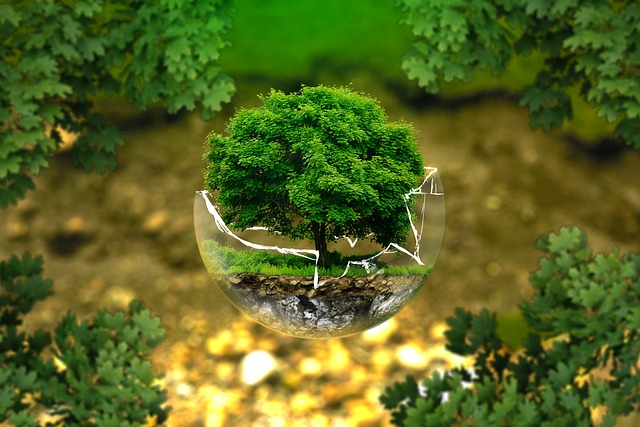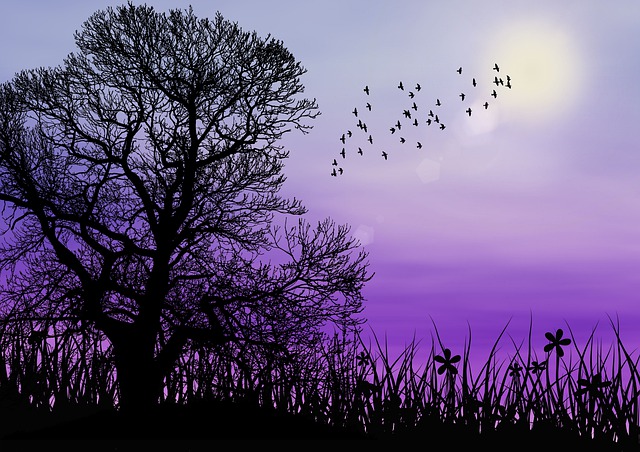In the recent Nature Summit, Roshi Joan Halifax –writer, teacher, artist and activist – stressed the need for a reciprocal relationship with nature. She suggests that too often mindfulness practitioners focus only on the nurture that they can obtain from nature but overlook the “imperative to steward where we are’ – to look after, and care for, nature in our immediate environment. Joan contends that this reciprocal relationship is critical in our current challenging times when we are confronted by the devastation of climate change simultaneously with the ongoing global erosion of mental health.
Experiencing nurture in nature
Joan mentioned that she is “restored in the natural world” but not in the “constructed world” of cities. However, she counsels against despising or devaluing the constructed world. Nature surrounds us wherever we are. Joan mentioned seeing a hawk nesting on the edge of a building in New York and visiting Central Park. While these experiences of nature in the built environment are part of restoring our spirit, the depth of nurture achieved through immersion in the natural environment is of a different order and more pervasive and lasting.
Joan explains that in nature we can recapture the silence that the busy world of today has taken from us – we can access the power of stillness and silence to cultivate our creativity and our resilience. Joan describes her mindful practice in the mountains of “just sitting in choiceless awareness” and gaining the restorative benefits of nature through this goal-less approach. She explains how she sees mountains as “places of meditation’ and has learned to value “solitude in nature”.
Joan discussed how her work through the Nomads Clinic (a form of socially engaged Buddhism she established in 1980) brought her into contact not only with the Himalayas but also the people of remote places such as Nepal and Tibet. She describes the Himalayan mountains as “very raw, very tough, very dangerous” and the people of these remote communities as “fantastic people, very robust, with a wonderful sense of humour”. She acknowledges that the mountains and the mountain people have taught her much about “humour and resilience”.
Many mindfulness authors such as Louie Schwartzberg highlight the power of nature to stimulate wonder and awe in us. Louie, in his Wonder & Awe podcast, shares the recent research of Michelle Shiota, that demonstrates that we become “better thinkers when we are feeling awe”. In his talks and films, Louie stresses that nature induces healing and helps us to develop a sense of gratitude and appreciation that lead to happiness, health and profound joy.
Pamela Anderson, in her memoir Love, Pamela, describes nature as her friend and teacher. She states that she is “always curious and wants to know what nature is trying to teach” because to her “everything is a clue or a sign”. Nature had always been a part of her life growing up on Vancouver Island and for her birthday each year she asked her two boys to volunteer with her at the California Wildlife Center – which involved cleaning birdcages and feeding birds and squirrels. In line with this work Pamela and her family cared for a possum as well as pelicans and seals, even undertaking a marine mammal rescue course together.
At one stage in her performing career she was exhausted in “mind, body and soul” and decided to spend a month reconnecting with her adult sons in Malibu and with nature. She found that connecting with nature (including during her five-mile daily walks), along with Pilates, enabled her to reconnect with her body and detox both physically and emotionally. When she was at Café Sénéquier at Port de Saint Tropez in France (where she went to recover from an abusive relationship), she watched the sunrises and yachts in the harbour, while “luxuriating in my own blossoming life” – nature again elicits gratitude and appreciation.
There are many ways to engage the nurturing power of nature, to understand and appreciate our interconnectedness with nature and deepen our relationship with nature. Louie Schwartzberg reminds us that we are able to widen and deepen our perspective on nature beyond our unique childhood experience and understanding. One way to do this is to adopt the mindset of stewardship of nature.
Stewardship of nature
Joan Halifax stressed the “moral responsibility” to undertake stewardship of our immediate natural environment – in her words, “to steward, protect and restore”. She argues that it is important to plant diverse species because diversity is “essential for the health of any ecosystem or social system”. Her interviewer and founder of the Nature Summit, Mark Coleman, stated that we are currently experiencing “a painful time of degradation, loss of species and places that we love”.
Stewardship can involve many different environmental caring actions such as:
- Composting
- Planting trees
- Caring for pot plans (both exterior and interior plants)
- Growing herbs
- Planting native trees that attract birds and bees
- Providing shelter for birds and possums
- Creating gardens of diverse species
- Trimming dead leaves or branches
- Enriching our soil
- Cultivating worm farms
- Conscious consumption.
Costa Georgiadis in his book, Costa’s World, suggests that we take up gardening “for the soil, the soul and the suburbs” – in his view, nurture through nature and stewardship of nature are not discrete activities, they occur together. He encourages us to be mindful of our immediate environment and get to know our microenvironment.
Pamela Anderson stressed her sense of being responsible for stewardship of nature in her home environment. She luxuriates in her garden developed when she returned to Vancouver Island in her latter years. Her first garden involving “five thousand feet of roses and vegetables” (planted by seed by herself) grew impressively. She developed solar energy, a sustainable water management system and set about “re-wilding” her property – a concept involving complementing the natural environment and protecting what already exists. She immersed herself in her “Garden of Eden” and the “salty, earthy fragrance” of the sea. Pamela attests to Costa’s perspective that nurture and stewardship go hand in hand and complement and reinforce each other.
Reflection
In his book, Coming to Our Senses: Healing Ourselves and the World through Mindfulness, Jon Kabat-Zin urges us to develop mindfulness through our senses. He talks of the immediacy of our external environment – the soundscape, the touchscape, the tastescape, the smellscape and the sightscape. Joan Halifax reminds us that nature provides the whole sensory experience – we can hear birds, touch plants, smell aromas from trees, taste native fruits, see the beauty and wonders of nature and feel the strength of the wind and the pressure on our bodies.
By spending time in nature and stewarding our immediate natural environment, we can grow in mindfulness and experience happiness and joy, peace and tranquility, gratitude and resilience. Nature has many gifts to offer but it needs to be visited and cared for. Micah Mortali offers ways to connect with nature in his book, Rewilding: Meditations, Practices and Skills for Awakening in Nature.
________________________________
Image by AndreasAux from Pixabay
By Ron Passfield – Copyright (Creative Commons license, Attribution–Non Commercial–No Derivatives)
Disclosure: If you purchase a product through this site, I may earn a commission which will help to pay for the site, the associated Meetup group, and the resources to support the blog.


